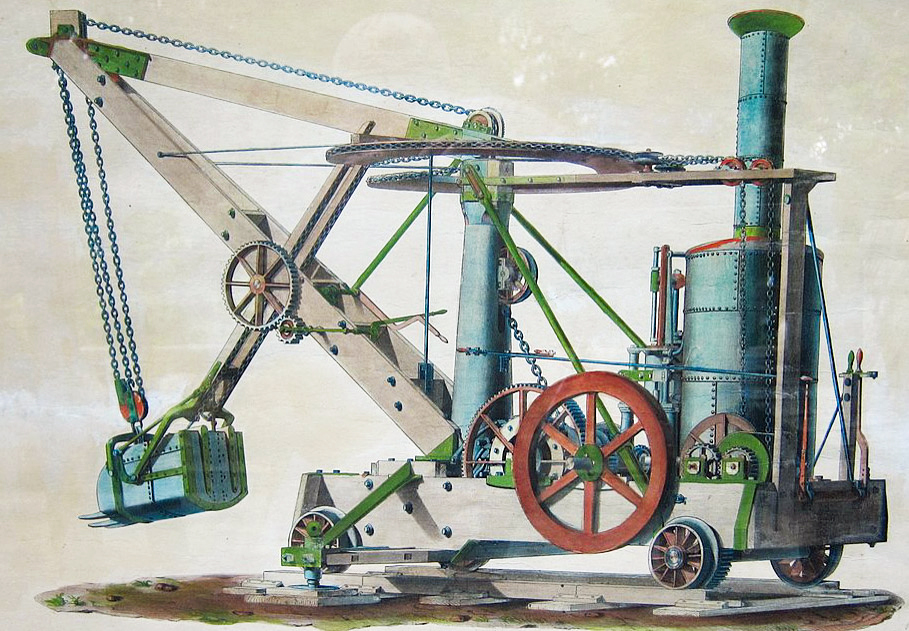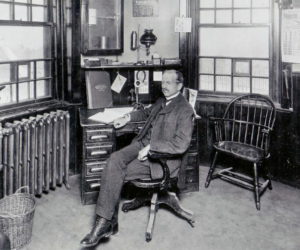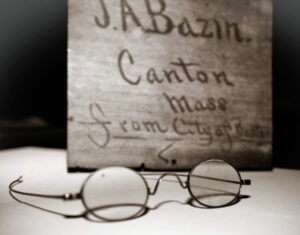True Tales from Canton’s Past: Notable Inventions
By George T. Comeau
William Otis’ Patent Excavator No. 3, invented in Canton, is considered the 1st piece of modern excavation equipment.
For some of our readers this week, you are reading the Canton Citizen for the first time. This issue is in your hands illustrating the breadth and width of town news, events, and culture. Subscribers will be pleased to know that this is the 245th installment of True Tales from Canton’s Past. And for our new readers, I hope that such stories about place and the people who come from here are pride points for the community.
We live in a town where change is a constant, and as such, innovation springs forth. In a few weeks the Paul Revere Heritage Site will play host to our annual Heritage Day — a celebration that builds upon the history of this place and showcases the best this region has to offer. I will point out, however, that it is no accident that Canton has been at the center of industry, commerce, transportation, and innovation. We are historically blessed by a location that has always been proximate to great people and great ideas. Canton boasts many “firsts” and has been a critical contributor to the history and growth of the United States.
Of course, by now the entire commonwealth is learning that Paul Revere built the first copper rolling mill here in 1801. Quite literally the fledgling U.S. Navy was developed upon the output of this mill. The copper bottom of the USS Constitution was made here along with much of the vast quantity of copper and brass fasteners, bolts, and spikes needed for shipbuilding. It may be no coincidence that the masts for the same vessel were cut from trees on Elm Street in 1797. And while this alone would put Canton on the map, the “firsts” keep coming.
One of the earliest examples of cotton cloth was made in Canton in 1802 by James Beaumont. In his factory on the East Branch of the Neponset River, Beaumont created what was likely the first large-scale textile manufacturing operation in America. From that factory, dozens of new inventions and machines sprang forth to support innovation and ease of production.
Meanwhile, James A. Bazin, another famed citizen, invented many musical instruments and is credited with being the father of the modern reed instrument. When he was 23 years old, a group of men brought Bazin a broken pitch pipe and asked him to repair it. Not only did he make the repair, but he also created a new invention — a sliding brass pitch pipe. He then began making several variations on this instrument and eventually moved to reed trumpets, which he invented in 1824. In 1831, Bazin invented what was likely the first reed harmonica in America, and he’s also credited with being the first American accordion maker. The original pitch pipe is in the collection of the Museum of Fine Arts, and the Canton Historical Society has many of Bazin’s instruments, inventions, and papers as well as his patents.
The critical invention of the modern lifeboat was also created here, alongside the fire hose nozzle still in use today. Zenas Crane, the pioneer in the paper industry of western Massachusetts, was born in Canton in 1777. With exposure to the early textile and iron mills, Crane was able to move to Dalton and successfully build a paper company, which is still a vital concern today.
By far one of the most important industrial breakthroughs credited to a Cantonian was the invention of the first steam shovel in America by William Otis in 1835 when he was only 22 years old. Keep in mind that much of what was needed for Otis to invent this fantastic machine was already found here in Canton, but Otis had a mind to put them all together and create something new. In 1834, Otis was on hand to watch the work at the Canton Viaduct, and to build the cut through Canton, the laborers needed to excavate vast quantities of soil and rock from along the route. That is when the innovation began.
The Otis shovel is recognized as the grandfather of all construction machines. According to the Association of Equipment Manufacturers, “Otis recognized the need for moving earth mechanically. His design utilized all the basic principles of the modern cable shovel, with the exception of 360-degree rotation. Only the advent of the hydraulic excavator changed the basic concept of this class of machine. He received a patent for another shovel design in 1839, but died from typhus fever later that year at the early age of 26.”
Otis’ wife remarried and the family held on to the patent for almost 40 years. “Born in an era of manual labor and mules, the Otis shovel,” notes the AEM, “was phenomenal in that it preceded all other earthmoving and construction machines by decades.”
Otis’ early prototypes were built and likely used along the route for the Boston and Providence Railroad. The railroad was transformational on many levels. In fact, the Revere & Son Copper Company was the first industry in America to have a railroad spur run through the plant. Many, if not all of the factories in Canton flourished because of the railroad line.
Dr. Robert Krim, one of the foremost scholars on our area’s history of innovation writes about the way that proximity leads to innovation. In his book Boston Made: From Revolution to Robotics – Innovations That Changed the World, Krim observes that there are always “adjacent possible” paths which take us from our current technology into areas and solutions we hadn’t yet imagined. This is exactly what happened when the first steam shovel in America was invented. Krim writes, “When William Otis was working on prototypes for a steam-powered excavator, he had input from all kinds of metalworkers and blacksmiths at a nearby manufacturer, which made all the difference.” The reference is to the Kinsley Iron Works and the Revere & Son Copper Mill. Both mills and a handful of others were critical in proximity to the work of Otis as well as countless other inventors.
Proximity was key when William Hunneman (an apprentice of Paul Revere) developed the earliest “fire engines.” Built in nearby Roxbury, they were essentially water pressure pumps that were fashioned from copper tanks made of sheet copper from Revere’s mill. Proximity to Revere and the essential products made the development of the invention possible.
A number of other inventors also turned to Canton for innovation. In 1807, the Revere mill began supplying heavy copper sheets used by Robert Fulton of New York City for the boilers in many of his steamboats. Incidentally, the brass pitch pipes and brass horns for Bazin’s reed instruments also came from the Revere mill.

Abbott Lawrence Rotch is seated inside the Blue Hill Observatory. (Courtesy of the Blue Hill Observatory)
And perhaps one of the most enduring innovations in science is best exemplified on the hills high above Canton. For over 138 years, the historic Blue Hill Observatory has maintained an extensive and high-quality record of local climate and has supported pioneering research in atmospheric science. The weather observatory is this author’s favorite historic site in all of Canton. In 1885, at a cost of $3,500, Abbott Lawrence Rotch constructed a small stone observatory tower with the living quarters in Canton and the tower in Milton. The town line bisects the summit of Great Blue Hill and runs through the observatory building. At midnight on January 31, 1885, fireworks were set off, and Rotch commenced a weather observational program that has continued uninterrupted to the present day. Thus began the oldest, continuously operated weather observatory in the United States — now both an International Benchmark Climate Station and a National Historic Landmark.
Some of this nation’s earliest studies on flight using kites and gliders happened on and about the town line. Kites were used here as early as 1894 to lift scientific instruments, and hundreds of records were assembled. In 1907 alone, more than 17 flights were made by kites to maximum heights of 12,060 feet. Rotch was an amazing scientist and balloonist. In 1904, he secured the first meteorological observations using sounding balloons from heights of between five and 10 miles over the American continent.
Orville and Wilbur Wright studied and depended upon Canton and the science developed here for the work they did to invent the airplane. These two pioneers had in their workshop library the atmospheric observations and data learned from high altitude kite flying from the summit of Blue Hill.
In 1907 the Aero Club of New England was formally chartered by the commonwealth of Massachusetts. The history of the organization predates that historic occasion by five years, when it was organized on January 2, 1902, nearly two full years before the Wright brothers made their landmark flight of December 17, 1903. The Wright brothers were friends with Rotch and once again, proximity to the thinkers and innovators of the day led to groundbreaking success.
The basis of all that has been invented here is built upon geographical proximity leading to innovation. For over 300 years our community has been a part of the global story of invention and progress and hundreds of “eureka moments.”
Short URL: https://www.thecantoncitizen.com/?p=110500











